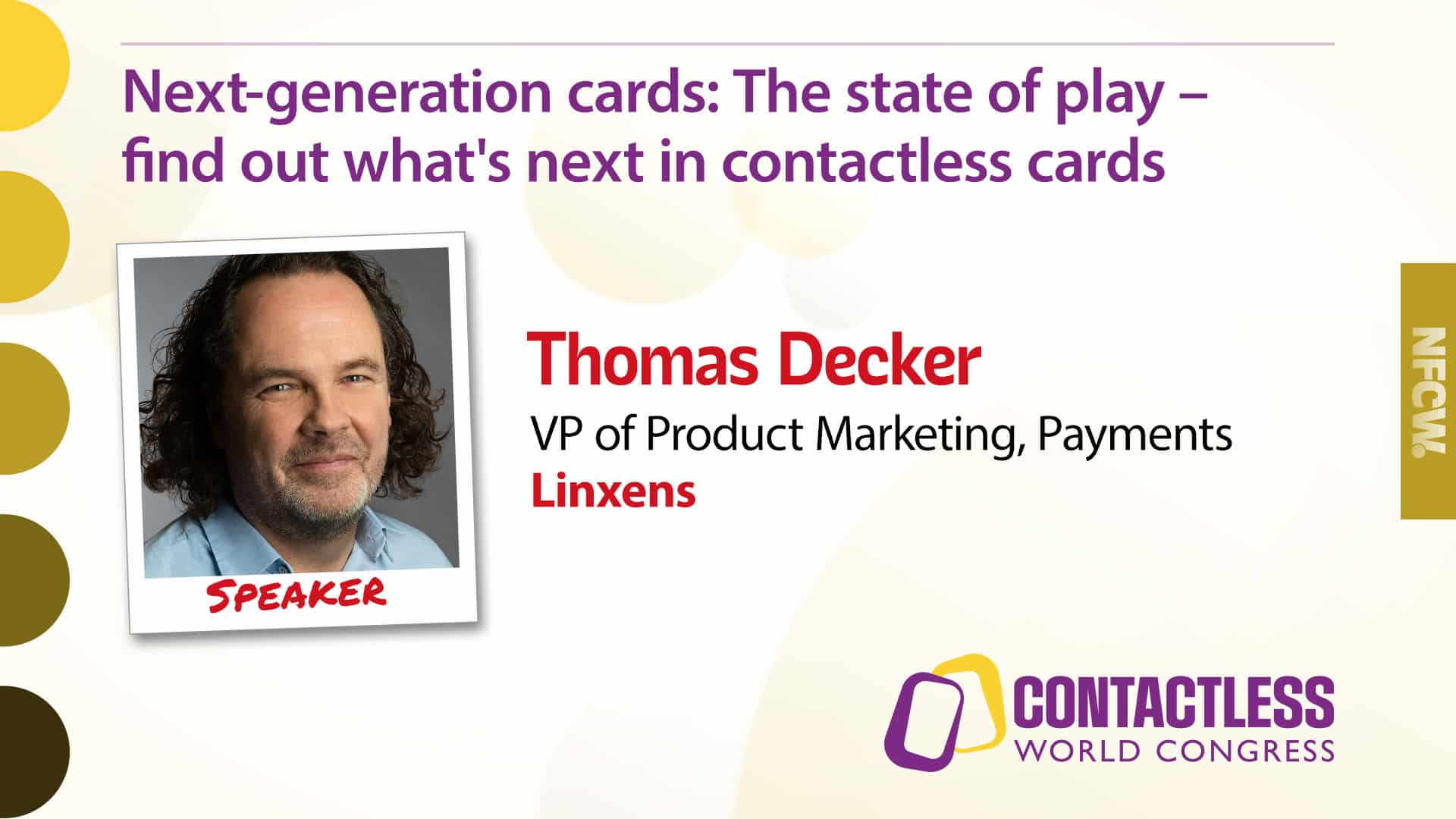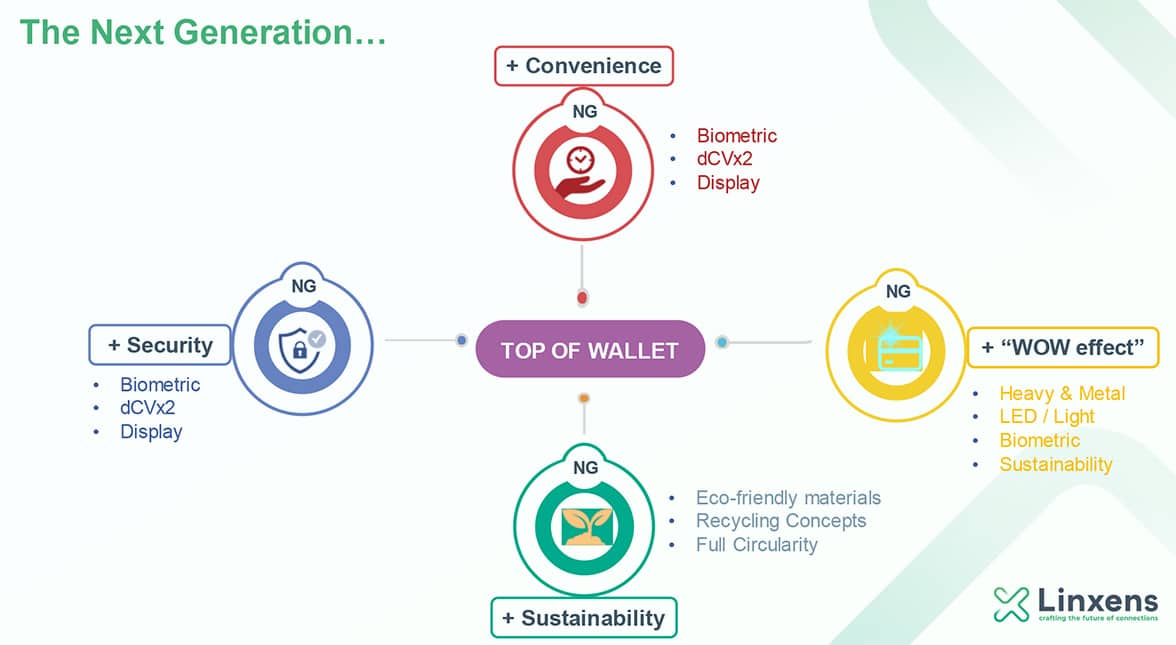
A new Contactless World Congress presentation that provides in-depth insight into the current state of play and market outlook for next-generation contactless cards is now available in the NFCW Knowledge Centre.
In this comprehensive 54-minute presentation, Thomas Decker — vice president for payments product marketing at smart card tape, inlay and module packaging leader Linxens — provides a detailed analysis of the market readiness, growth potential, current status, market adoption drivers, pros, cons and growth constraints for biometric cards, metal cards, dynamic CVV cards, display cards and LED light cards.
Decker also provides an in-depth analysis of sustainable alternatives to today’s predominantly first-use PVC substrates, including the various alternative card body types that are now becoming available such as recycled PVC (rPVC), recycled PETG (rPETG), ocean plastic, biodegradable PLA plastic, and wood.
The fact-packed presentation begins with an overview of the history of payment cards, beginning with the arrival of magnetic stripe cards in 1970, the emergence of the EMV standard, the arrival of contactless cards and dual interface cards and the current market status where some 85% of all EMV cards are dual interface cards manufactured from first-use PVC.
Decker then compares the strengths and weaknesses of each of the next-generation card types, based on their ability to aid issuers in achieving a top of wallet position.
In the future, Decker says, “we will see a much bigger variety of cards” as “all these technologies have some potential to occupy very interesting niche market[s], which might well reach, you know, something like a couple of hundred million cards out of a complete market of 3bn.”
Sustainable cards
By far the biggest change we will see in contactless cards in the coming years, however, will be the move away from first-use PVC to more sustainable card materials, “a megatrend in our industry”, Decker says.
Some 500m of the 3bn cards manufactured this year will be made from a sustainable alternative to first-use PVC and that’s expected to increase to more than 1bn in 2025, he adds.

Despite the now widespread availability of mobile payments, contactless payment card volumes remain steady as banks continue to look to physical cards to differentiate their offering and maintain — or seize — top of wallet positioning, Decker concludes.
“The future of the card is bright,” Decker says.
NFCW members can access a recording of Decker’s presentation along with a copy of his slide deck in the NFCW Knowledge Centre.
• Not yet a member? You can get your free NFCW membership here. You’ll then be able to access both Decker’s presentation and a host of additional Contactless World Congress presentations and resources with just one click.
Learn more about Linxens in the NFCW Expo.